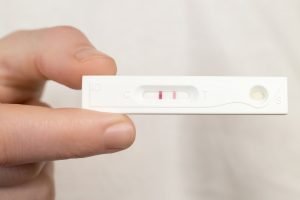Pregnancy tests are a quick and reliable way to determine if you’re pregnant. Whether you’re trying to conceive or suspect you might be pregnant due to a missed period or other early signs, knowing how to properly use a pregnancy test ensures accurate results. This article will guide you through the basics of using a pregnancy test, understanding the results, and knowing what steps to take next.
When to Take a Pregnancy Test
- Wait for a missed period. The best time to take a pregnancy test is after you’ve missed your period. Pregnancy tests detect the hormone human chorionic gonadotropin (hCG), which the body produces after a fertilized egg attaches to the uterine lining. Waiting a few days after a missed period allows hCG levels to rise enough to be detected.
- Take it in the morning. For the most accurate results, it’s recommended to take the test first thing in the morning when your urine is most concentrated. This increases the likelihood of detecting hCG if you’re pregnant.
How to Use a Pregnancy Test

- Read the instructions. Different pregnancy test brands may have slight variations in how they work. Always read the instructions included in the package to ensure proper use.
- Prepare the test. Most pregnancy tests come in two forms: dip sticks and midstream tests.
- For dip sticks, you’ll need a clean container to collect urine.
- For midstream tests, you’ll place the test directly in the urine stream.
- Collect or apply urine.
- For dip stick tests: Collect urine in a clean cup and dip the test strip into the urine up to the indicated line for the specified amount of time (usually a few seconds).
- For midstream tests: Hold the test under your urine stream for about 5–10 seconds, as instructed.
- Wait for the results. After applying the urine, place the test on a flat surface and wait for the time indicated in the instructions (usually 3–5 minutes). Avoid checking the results too early or too late, as this may affect accuracy.
- Interpret the results.
- Positive (+ or two lines): This indicates pregnancy.
- Negative (- or one line): This indicates you are not pregnant.
- Invalid (no visible lines or symbols): The test may not have been used correctly, or it could be defective. Try again with a new test.
Tips for Accurate Results
- Check the expiration date. Always use a pregnancy test that is within its expiration period to ensure reliability.
- Avoid drinking too much water. Excessive fluid intake before testing can dilute hCG levels, potentially leading to false negatives.
- Repeat the test if needed. If you get a negative result but still suspect pregnancy, wait a few days and take another test. Early testing might not detect low hCG levels.
What to Do After Taking a Pregnancy Test
- If the test is positive: Schedule an appointment with a healthcare provider to confirm the pregnancy and start prenatal care.
- If the test is negative: If you still suspect pregnancy or experience unusual symptoms, consult a doctor. There may be other underlying reasons for your missed period or symptoms.
Understanding the Role of Pregnancy Tests

Pregnancy tests are highly accurate when used correctly, but they are not infallible. Factors like testing too early, improper use, or a defective test can affect results. If you’re ever uncertain about your results or have questions, seeking professional medical advice is always the best course of action.
By understanding how to use a pregnancy test properly and knowing when to seek further advice, you can take control of your reproductive health with confidence.


